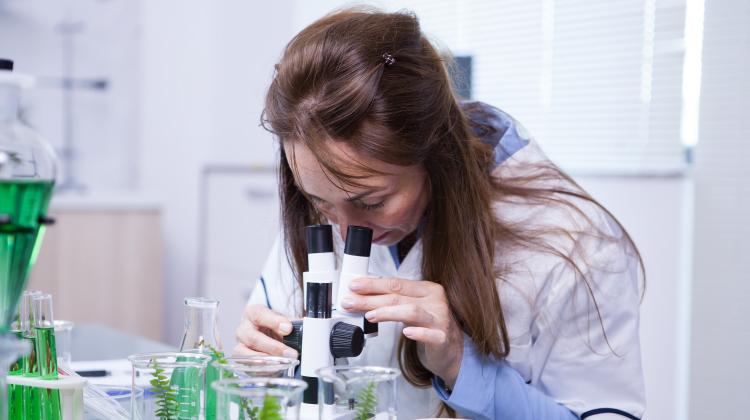The relationship between science and society has undergone profound changes over the centuries. In the 16th century, the status of a scientist was measured by the number of problems he was able to solve. Appointments to professorships at universities were then organised in the form of scientific tournaments.
If a scientist, who, for example, knew the formulae for calculating the area and perimeter of certain figures or was able to solve certain equations, shared his knowledge, other scientists would become at least as good as him. It is therefore not surprising that at that time there was reluctance to pass on the knowledge they possessed, the secrets of which the scientists of the time often did not want to reveal even on their deathbeds. The invention of printing changed this state of affairs. For example, Blaise Pascal (1623-1662), in order to disseminate the results of his research, put up posters in the streets of Paris about the results he had obtained, together with a suggestion for proof.
The social difference between science and society began as the scientific community was formed and science was given a character different from other activities. The 17th and 18th centuries saw further changes. Society then played an important role in the widespread acceptance of science. Experimental philosophers assigned the public the role of non-specialist witnesses to experiments. In the 18th century, science became a source of interest and entertainment for the aristocracy and middle class.
The transformation of the second half of the 18th century continued with the industrial and technical revolution. The second half of the 19th century saw a significant increase in popularisation activities around the world. At that time, scientific and technical progress attracted widespread attention. In the age of steam and electricity, great scientific exhibitions were organised, taking advantage of the public's curiosity about the many groundbreaking discoveries. Scientific knowledge was disseminated in the hope that it would contribute to the development of the emerging industrial economy. So many inventions were made that in 1899 the patent office in New York asked for its closure. It seemed that everything that could be invented had already been invented. However, this was not the end of inventions, but in fact only the beginning. At the beginning of the 20th century, for example, the electric washing machine was discovered, synthetic rubber, blood groups were distinguished and the first successful aeroplane flights took place.
The interest in science also applied to the purely theoretical sciences. The concept of vectors emerged from two distinct areas of mathematics, geometry and algebra. Complex numbers could be introduced purely algebraically as pairs of real numbers with appropriately defined operations, as William Hamilton (1805-1865) did. A different path was followed by Hermann Grassmann (1809-1877), a teacher in the provincial town of Stettin, who published the results of his research in a small edition of his own. Waiting to exchange horses on a stagecoach, a traveller bought his work and showed it to Berlin scholars. In Grassmann's work we find the beginnings of linear
algebra. His approach had the advantage that the theory could be applied to any dimension. At the end of the 19th century the dispute between the supporters of introducing vectors into mathematics in the spirit of Hamilton or Grassmann was very lively and disputes (which could be described as ordinary murders) were organised on this subject. Meetings between adherents of both orientations were also held spontaneously and had the character of today's meetings between fans of rival football clubs.
Another example is the Polish School of Mathematics (PSM, mathematicians active in Poland during the interwar period). The research of PSM mathematicians was so groundbreaking that to this day it has ensured Polish mathematics a significant place on the international arena. When informing the public about the newly obtained abstract results, an attempt was always made to provide some kind of comment understandable to everyone, for example that a ball covered with hair cannot be combed in such a way that it does not have a parting or a whisker. The success of the PSM was so great, and the enthusiasm of the mathematicians so contagious, that the scientific seminars were also attended by people we know from other branches of science and by people completely unrelated to science. It was in good taste, for example, to ask a girl out on a date to a mathematical scientific seminar.
After World War II, a new kind of popularisation of science emerged in the world. Scientists such as Albert Einstein (1879-1955) and Marie Curie-Sklodowska (1867-1934) gained a significant public image. The defence of pure science is one of the main features of the popularisation of the time. New media such as radio and cinema began to be used in the dissemination of culture and science. Over time, science dissemination activities will begin to reach an ever wider audience. Science centres, planetariums and practical museums will be established. A powerful tool for popularising science will be the use of television, as a new form of communication with society, and later also the Internet. Today's opportunities for accessing information are changing our vision of the world and the assimilation and dissemination of knowledge. Today, access to knowledge is synonymous with development, well-being and quality of life. In this context, insight into the achievements of science is a social and ethical right of every human being.
At Lodz University of Technology, a new series of meetings "Profession of Scientist" has been launched, addressed to the local community: young people over 13 years old and adults, co-organized by Prof. Szymańska-Dębowska. Get to know the details!




